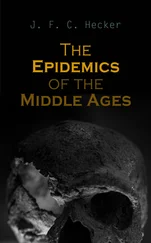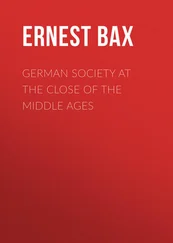The Haemus or Balkan chain which runs from west to east is also double, like Rhodope, but is not divided by a large river. The Haemus mountains begin near the sources of the Timacus (Timok) and the Margus (Morava), from which they stretch to the shores of the Euxine. To a traveller approaching them from the northern or Danubian side they do not present an impressive appearance, for the ascent is very gradual; plateau rises above plateau, or the transition is accomplished by gentle slopes, and the height of the highest parts is lost through the number of intervening degrees. But on the southern side the descent is precipitous, and the aspect is imposing and sublime. This contrast between the two sides of the Haemus range is closely connected with the existence of the second and lower parallel range, called the Srêdna Gora, which runs through Roumelia from Sofia to Sliven. It seems as if a convulsion of the earth had cloven asunder an original and large chain by a sudden rent, which gave its abrupt and sheer character to the southern side of the Haemus mountains, and interrupted the gradual upward incline from the low plain of Thrace.
The chain of Srêdna Gora, which is not to be confused with the northern chain of Haemus, is divided into three parts, which may be distinguished as the Karadža Dagh, the Srêdna Gora, and the Ichtimaner. The Karadža Dagh mountains are the most easterly, and are separated from Srêdna Gora by the river Strêma (a tributary of the Maritsa), while the valley of the Tundža (Taenarus), with its fields of roses and pleasantly situated towns, divides it from Mount Haemus. Srêdna Gora reaches a greater height than the mountains to east or to west, and is divided by the river Topolnitsa from the most westerly portion, the Ichtimaner mountains, which connect the Balkan system with the Rhodope system, whilst at the same time they are the watershed between the tributaries of the Hebrus and those of the Danube.
There are eight chief passes across the Haemus range from Lower Moesia to southern Thrace. If we begin from the eastern extremity, there is the coast pass which a traveller would take who, starting from Odessus (Varna), wished to reach Anchialus. The next pass was one of the most important. It crossed the Kamcija at Pannysus, and through it ran the road from Trajan’s Marcianopolis (near Provad, between Šumla and Varna) southward. Farther west were the two adjacent passes of Veregava and Verbits (together known as the Gylorski pass). 2Passing over the Kotel and Vratniti passes, which seem to have been little used for military purposes in the period which concerns us, we come to the celebrated pass of Šipka which connects the valley of the Jatrus (Jantra) with that of the Tundža. Through it ran the direct road from Novae (Šistova) on the Danube to Beroe (Stara Zagora), Philippopolis, and Hadrianople.
From this pass eastward extend the wildest regions of the Balkans, which have always been the favourite home of outlaws — scamars, as they were called, or klephts — who could defy law in thick forests and inaccessible ravines, regions echoing with the songs and romances of outlaw life.
The traveller from Novae or Oescus (at Gigen, at the mouth of the river Isker) could also reach Philippopolis by the pass of Trojan, close to the sources of the river Asemus (Osma). Finally the long pass of Succi lay on the road from Sardica to Constantinople.
The journey from Singidunum to Constantinople along the main road was reckoned as 670 Roman miles. Singidunum (Belgrade), situated at the junction of the Save with the Danube, was the principal city of the province of Upper Moesia, and was close to the frontier between the eastern and western divisions of the Empire. The road ran at first along the right shore of the Danube, passing Margus (near the village of Dubravica, where the Margus or Morava joins the greater river), till it reached, ten miles from the Viminacium (close to Kostolats), an important station of the Danube flotilla. Here the traveller, instead of pursuing the eastward road to Durostorum (Silistria), turned southward and again reached the Morava at the town of Horreum Margi, one of the chief factories of arms in the peninsula. The next important town was Naissus (Niš), on the north bank of the Nišava, so strongly fortified that hitherto no enemy had ever captured it. To-day it is the junction of railways, in old days it was the junction of many roads. The Byzantium route continued south-eastward, passing Remesiana (Ak Palanka) to Sardica, the chief town of the province of Dacia Mediterranea, beautifully situated in the large oval plain, under the great mountains, Vitoš on the west and Ryl to the south. From here south-westward ran a road to Ulpia Pautalia (Küstendil) and Dyrrhachium. The traveller pressing to Constantinople, when he left the plain of Sardica, ascended to the pass of Succi in the Ichtimaner mountains. This pass was considered the key of Thrace and was strongly fortified. Descending from this defile the road followed the left bank of the Heberus to Philippopolis (the chief city of the province of Thracia), standing on its three great syenite rocks, with a magnificent view of Mount Rhodope to the south-west. From Philippopolis to Hadrianople (the capital of the province of Haemimontus) was a journey of six days. On the way one passed the fort of Arzus, on a river of the same name (probably the Uzundža). Hadrianople lies at the junction of three rivers; here the Tonzus (Tundža) from the north, and the Artiscus (Arda) from the south, flow into the Hebrus. Another journey of six days brought the traveller to the shore of the Propontis. He passed Arcadiopolis (Lüle Burgas) the ancient Bergule, which the Emperor Arcadius had renamed, on a tributary of the river Erginus. 3He passed Drusipara (near Karištaran), from which a road led northward to Anchialus on the Black Sea. Then he came to Tzurulon (Corlu), and at last to Heraclea (the old Samian colony of Perinthus) on the sea, now a miserable village. Here the road joined the road from Dyrrhachium and Thessalonica, and the rest of the way ran close to the seashore, past Selymbria 4and the fort of Athyras (near Boyuk-Chekmedže) and Rhegium (at Kuchuk-Chekmedže), to the Golden Gate, which the traveller who tarried not on his way would reach on the thirty-first day after he had left Singidunum. 5
When we turn to the western half of the Peninsula, the lands of Illyria and Macedonia, we find an irregular network of mountains, compared with which the configuration of Thrace is simple. In these highlands there are no great plains, and perhaps the first thing to be grasped is that the rivers which water them belong to the systems of the Black Sea and the Aegean, except in the south-west where the Drin and other smaller streams fall into the Hadriatic. Thus the line of watershed between the western and eastern seas runs near the Hadriatic eastward to the range of Scardus (Šar Dagh), which divides the streams that feed the Drilo (Drin) from the western tributaries of the Vardar. The Alpine lands of Dalmatia, using this name in its ancient and wider meaning, are watered by the river Drinus (Drina) and other tributaries of the Save. They are inhospitable and were thinly inhabited and their chief value lay in their mineral wealth. 6The principal roads connecting these highlands with the Hadriatic were those from Jader (Zara) to Siscia on the Save, and from Salona to Ad Matricem, which corresponds to the modern Sarajevo though it is not on the same site.
The Drina is the western boundary of modern Serbia which answers roughly to the ancient provinces of Moesia prima, Dacia mediterranea, and Dardania. In the centre of this country is the high range known as Kopaonik (mountain of Mines), which with the Yastrebac Planina and the Petrova Gora forms a huge triangle round which the two great branches of the river Morava flow in many curves and windings. The western branch is now known as the Ibar in its upper course and the eastern is sometimes called the Bulgarian Morava. 7
Читать дальше












